
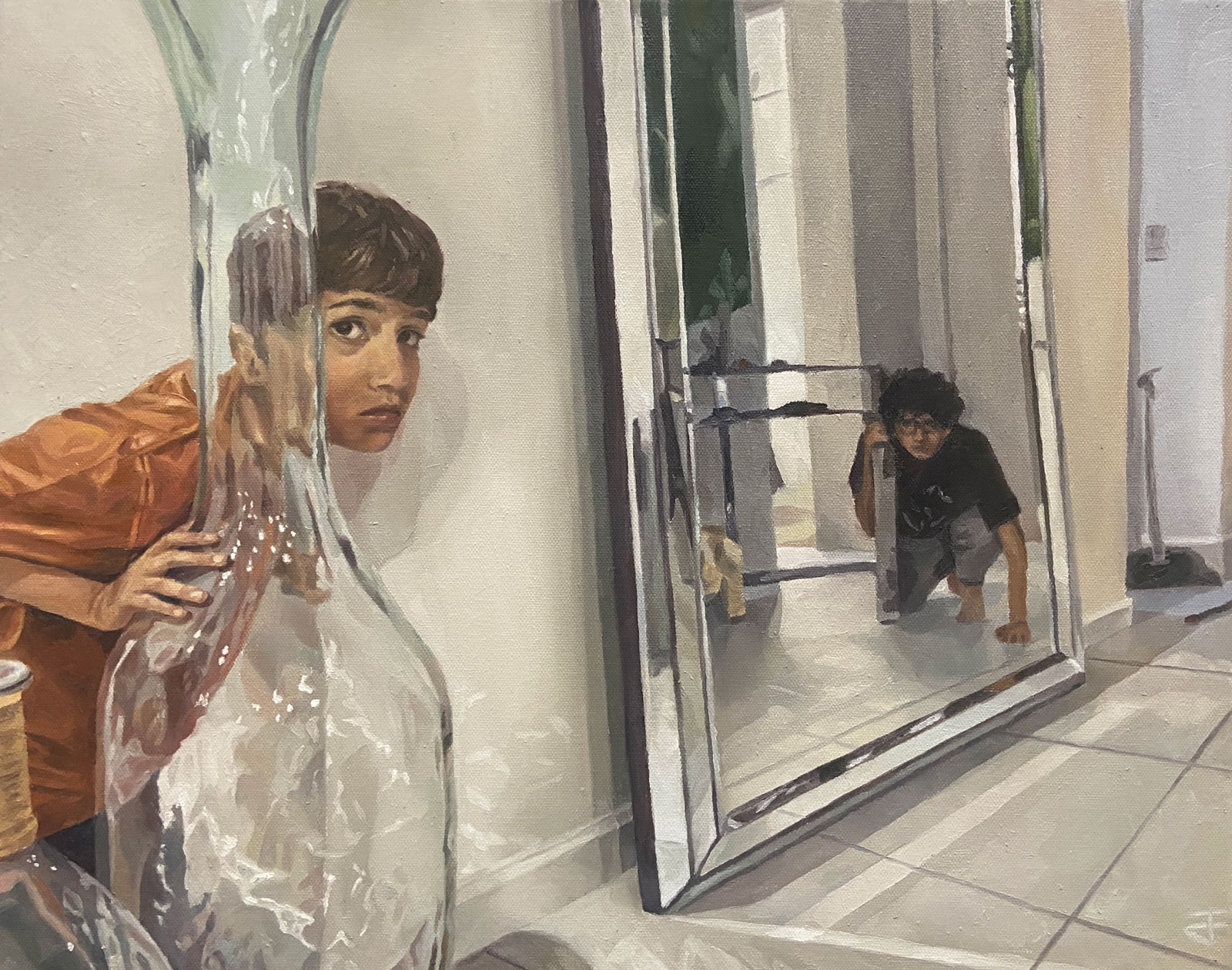
Escondite

Height: 12" x Width: 16" | Material(s): Oil paint on canvas | Process(es): Diagonal composition and orange color add to the suspense created through the subject matter. | Idea(s): Figures seen hiding behind transparent or reflective objects create suspense. | Curatorial Note: The child’s gaze on the viewer mimics a “selfie-like” setting providing insight into an intimate family dinner and conversation. Color and architectural details create a deep space that serves to keep the painting composition from appearing overly crowded.
Thomas Diaz
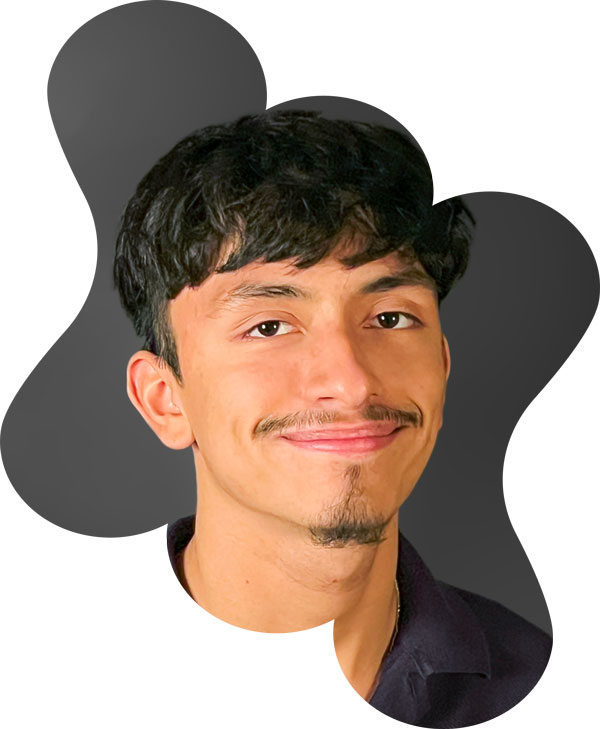

AP 2-D
Alexabder W. Dreyfoos School of the Arts
West Palm Beach, FL, USA
Student statement
Student statement
How did this artwork relate to your sustained investigation inquiry?
My work, “Escondite,” delves into the facet of my sustained investigation that concerns itself with questioning a viewer's assumptions about a work and undermining those preconceived notions through composition and subject context. Although a seemingly simplistic depiction of a game of hide-and-seek, this work explores the complexities of mundane moments and the potential visual tension and irony that can deepen the meaning of any moment. Superficially, the scene portrays a game endemic to childhood, evoking themes of innocence and lighthearted joy. Progressively, the irony of obscuring oneself through transparent or reflective barriers begins to present itself as a sense of naivety, and comedy emerges. Contextually, the figures in the painting share a deep tension that can only be understood when their relationship is considered. For my brothers and me, Escondite, Spanish for hide-and-seek, was, and is, a simultaneously highly competitive yet recreational form of entertainment.
How did you choose your inquiry?
The process of choosing my inquiry followed my workflow. Although the newer portion of my portfolio was, in great part, created with a concrete sustained investigation idea in mind, the initial works in my portfolio informed the development of said sustained investigation. For those first works, the conceptual process succeeded the material process. This way, I amassed a body of work, made up of finished works and preliminary sketches, that in itself began to develop a through line, allowing for an organic and unforced process that remained sincere to my identity as an artist. Naturally, the work I was creating tended to revolve around the same subject matter: my family. Through deep consideration, I realized that in depicting my family and everyday life, I sought to explore the inherent beauty and meaning I attributed to mundane moments. I identified my deep passion for the contradiction of personally momentous yet generally quotidian experiences.
How can I explore the different ways in which mundane instances, that form part of my life, can be portrayed and altered to suggest different meanings? Another facet entailed questioning the assumptions that a viewer may make about a work by suggesting deeper meaning through compositional details and lighting.
Describe how your inquiry evolved as your sustained investigation developed.
As I continued to investigate my interest in the mundane, I realized my need to expand the confines of my inquiry to accommodate the growing facets my work was beginning to manifest around. Initially, my inquiry focused solely on portraying the circumstantial significance of everyday events, a conformity that arose from a body of work still in its beginning stages. As my work progressed and ideas began to branch off, I created newer interpretations of my original inquiry. My inquiry remained grounded in the mundane but diversified to include the concept of perception as well as the idea of fabricating mundane moments. This flexibility allowed me to create a body of work that was more complex and nuanced in terms of concept and that flowed more naturally.
How did you practice or improve your written inquiry statement as your portfolio developed?
At first, I approached my portfolio through a widely encompassing inquiry. This allowed me to explore how comfortable I was with said inquiry and whether or not I would be able to naturally create work that justified it. As my portfolio developed, I narrowed down the details of my inquiry and homed in on what facets I specifically wanted to focus on. In doing this, I was able to base my portfolio around an idea that may seem too broad to function as a guide but, in reality, is easily fragmented for more concise exploration.
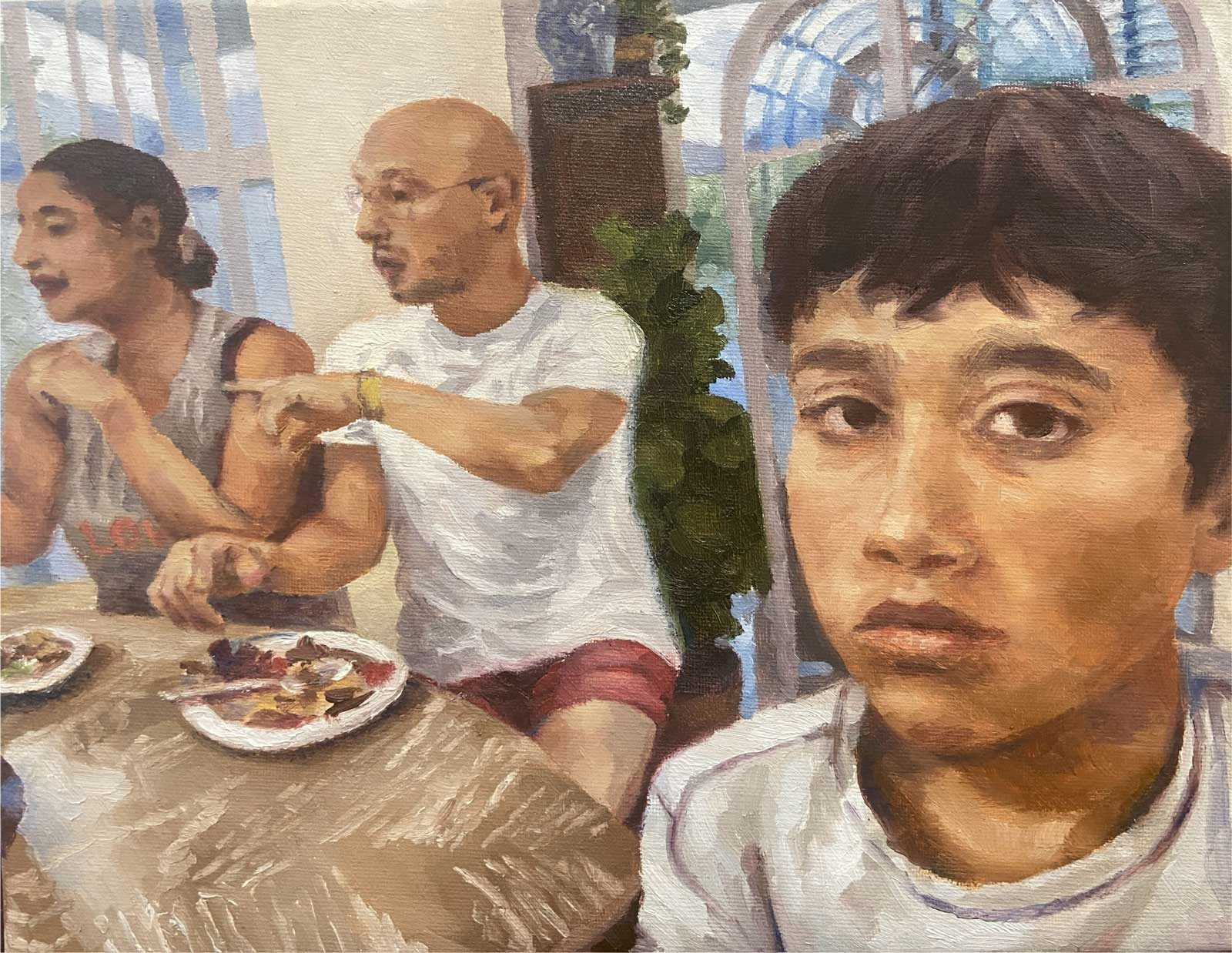
Untitled

Height: 11" x Width: 14" | Material(s): Oil paint on canvas | Process(es): Painted cool colors in background so it recedes, warm in foreground pushes figures forward | Idea(s): Candid moment is made to seem more important through the fixed stare of the primary figure.
What is your advice to other AP Art and Design students?
My advice to other AP Art and Design students would be to approach their portfolios from a blank slate. Prior expectations and comparisons to others’ portfolios often discourage students from pursuing ideas they are truly passionate about, opting instead to investigate inquiries others may deem profound. In reality, the most fitting and profound sustained investigations come from a student’s own experiences and passions, not those of others. If one approaches any AP Art and Design portfolio with a blank slate and allows the work to organically inspire investigation, the resulting product is more likely to be sincere to that student’s artistic voice and ultimately successful when assessed by College Board.
Scott Armetta
Art Teacher
Alexander W. Dreyfoos School of the Arts, West Palm Beach, FL, USA
Teacher statement
Teacher statement
The AP Art and Design course supports inquiry-based personalized learning in the sustained investigation portfolio component. What strategies helped you guide students through inquiry?
I aim to assist the students in discovering what they are sincerely interested in investigating for the school year. This can contrast with something that sounds like a good sustained investigation initially, but that they are not actually compelled to create work about. Even if the words are not all there, but there is a real interest in some aspect(s) of art making, I look at that as promising in the development of an SI. I do not expect the students to have a fully formed understanding of what their sustained investigation is very early in the year. Some of the tools and strategies we use early in the year are mood boards, mind maps, and brainstorming. If possible, I look through work they’ve done before and ask students questions about what kind of work they like to make, think they would be interested in creating, or what they’d like to try to get more experience or insight about. I encourage the mindset that, even with there being real criteria as far as what a sustained investigation is and is not, there is very likely a way to turn whatever they are interested in into an SI as we work throughout the school year. Throughout the course, we have class and individual discussions featuring diverse examples of differing approaches to building a portfolio with a sustained investigation. Sometimes the examples are images and writing from the College Board website, former AP students of mine, other visual artists, or even works from other fields, such as music.
How did you scaffold writing into the art-making and thinking processes?
Early in the year, we use mood boards, idea maps, and brainstorming, though those tools and techniques can be used throughout the course. I also encourage students to use any method(s) they have learned that help them with ideation. The early writing can ignore rules of grammar; it can even ignore understandability to an outside audience as well as any other unhelpful limits so students have a starting point that is as inclusive, nuanced, and honest as possible. As more work is created, the artwork and writing tend to influence each other, and clarity of intent grows. We have updated drafts of writing throughout the year.
How did you support skill development AND inquiry in the AP Art and Design curriculum?
I often ask students to think about how specific assignments can connect meaningfully or interestingly to their sustained investigations. I encourage the idea that skills such as technique development or certain approaches to art making that an assignment may emphasize do not need to be ends in themselves. For example, there may be times that it can feel like a chore to practice a certain technique or art-making approach, but if looked at from the standpoint of having more access to skills that can allow for more freedom and range in artistic communication, it can become more interesting. Similar to a writer who learns more vocabulary, ways of putting sentences together, or approaches to describing subject matter, the options for expression grow.
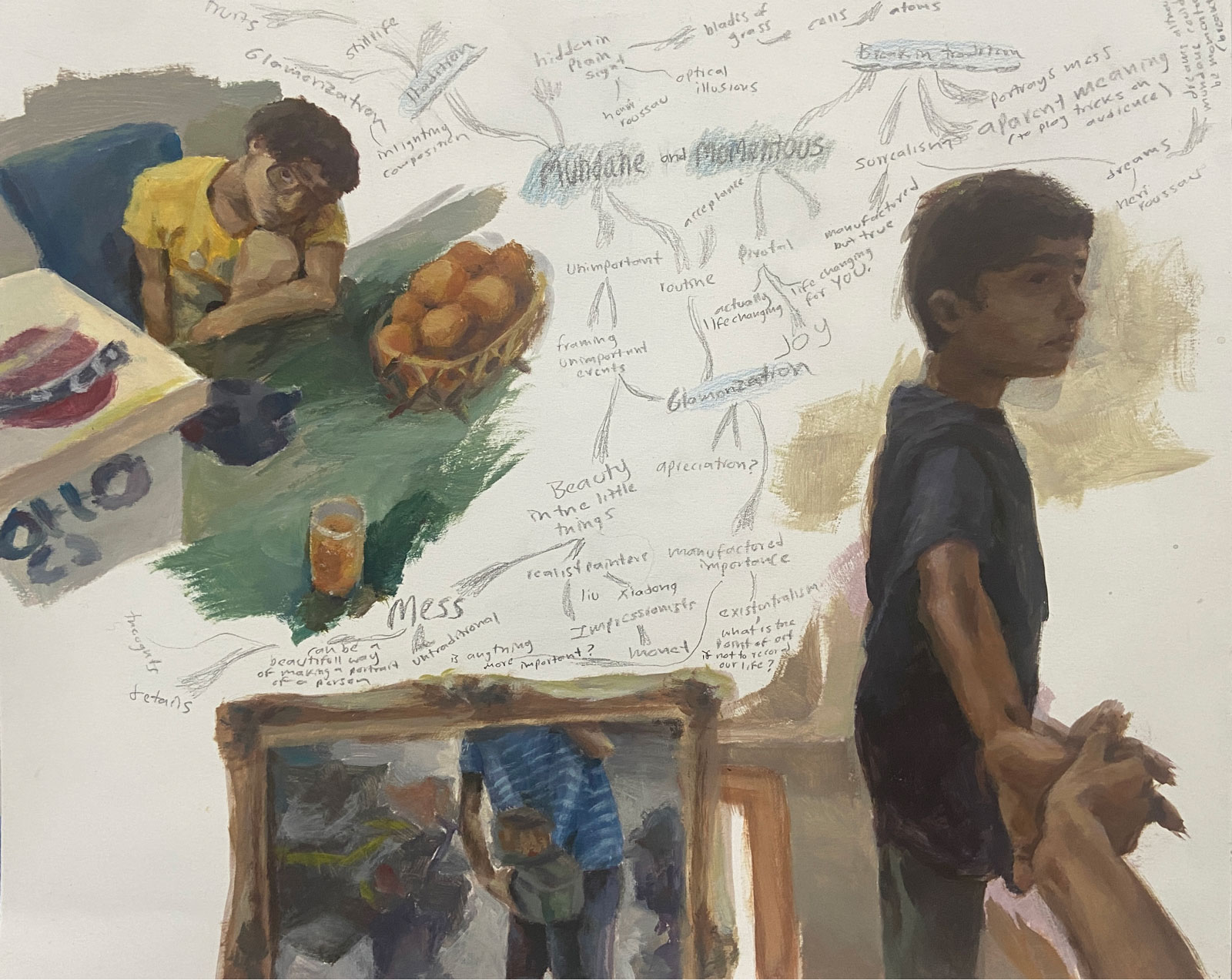
Mood Board | Height: 14" x Width: 18" | Material(s): Acrylic paint on paper | Process(es): Mood board of SI ideas, specifically exploring the created relation between subject and spectator | Curatorial Note: Sketchbook process paintings, a mind map, and notes provide insight into practice and ideation.
How did you structure practice, experimentation, and revision into your AP Art and Design curriculum?
With each assignment, I present a range of examples and a rationale for whatever it is we are doing so that students can make connections between the assignment and their sustained investigation (or the formation of a sustained investigation). Those connections involve practice, experimentation, and revision, often explicitly, though also by default as those three criteria are so often integral to the art-making process, sustained investigation or not.
How do you support your students in the Selected Works portfolio component?
Though work from the sustained investigation can be used in the Selected Works component, there can be times and situations when it is beneficial for students to step away from the expectation that all work should fit into their sustained investigation. The Selected Works section gives them a place to potentially feature some of that artwork.

Blake Bennett
Alexander W. Dreyfoos School of the Arts, West Palm Beach, FL, USA
Leader statement
Leader statement
What are you most proud of regarding your school’s AP Art and Design program, student, and teacher?
I am incredibly proud of the Alexander W. Dreyfoos School of the Arts Visual Arts Department, our dedicated teacher Scott Armetta, and my extremely talented student Thomas Diaz.
The Visual Arts Department program encourages students to explore personal visions through a variety of mediums and materials. Our passionate teachers facilitate an artistic journey every day on our campus, which provides our students a world-class art education and countless opportunities on our campus and in the community.
Thomas Diaz is an outstanding visual artist and student. His dedication to his art and academics is unparalleled, and he is revered by his teachers and peers. His work is stunning and his focus on detail in his artwork draws you in as an observer.
What do you do to support visual arts programming in your school?
As a principal, I strive to do everything possible to support my students and staff. As we need professional development, materials, guest artists, field trips, community assistance, and host exhibits, I support my students and teachers with their endeavors in any way I can.
What is your advice to other school leaders on how to support an AP Art and Design program?
I believe the AP Art and Design program allows students to explore and create on a collegiate level providing rigorous teaching and learning for my students. School leaders should be involved in planning with their teachers and providing the resources needed for all students to reach their highest potential.
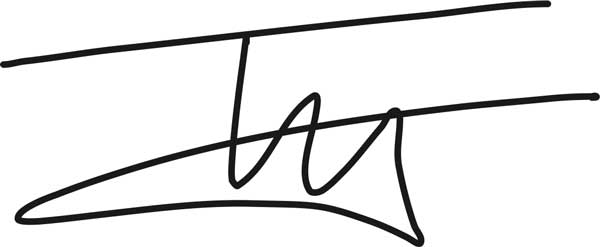
Thomas Diaz
